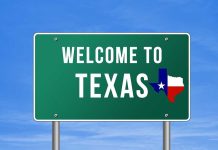
U.S. private sector employment plummeted in June with a stunning loss of 33,000 jobs, marking the first decline in over two years and shattering economists’ expectations of a 100,000 job increase.
Key Takeaways
- Private sector payrolls fell by 33,000 jobs in June, the first decline since March 2023, while economists had projected a gain of 95,000-100,000 jobs
- Professional services, education, health services, and financial sectors experienced significant job losses, while leisure, hospitality, manufacturing, and construction saw modest gains
- Small businesses bore the brunt of job cuts, while larger firms maintained some growth, suggesting economic uncertainty is disproportionately affecting smaller employers
- Despite slowing job growth, wage increases continued with annual pay rising 4.4% for job stayers and 6.8% for job changers
- President Trump emphasized economic growth potential and investment inflows to the USA despite the disappointing jobs report
Job Market Takes Unexpected Downturn
The private sector job market experienced its first significant contraction in more than two years this June, according to the latest ADP National Employment Report. The loss of 33,000 jobs came as a shocking development to economic analysts who had widely anticipated an increase of approximately 95,000 to 100,000 positions. This decline represents a dramatic shift from the previously steady, if slowing, job growth pattern that had characterized the post-pandemic recovery. The unexpected drop signals potential trouble for an economy that had appeared relatively resilient despite persistent inflation concerns and economic uncertainties.
The employment decline was not distributed evenly across all sectors. Professional and business services, education and health services, and financial activities sectors all reported significant job losses. These traditionally stable employment sectors showing weakness raise concerns about broader economic vulnerabilities. Meanwhile, leisure and hospitality, manufacturing, and construction industries managed to post modest gains, partially offsetting the overall decline. Regional disparities were also evident, with the Midwest and Western U.S. experiencing the largest job contractions, while the Southern states maintained some job growth.
Small Businesses Hit Hardest
The employment report revealed a particularly troubling trend for small businesses, which experienced disproportionate job losses compared to their larger counterparts. While major corporations with substantial capital reserves showed resilience and even modest payroll growth, smaller enterprises struggled to maintain staffing levels. This divergence highlights the increasing challenges faced by small business owners in the current economic climate, where uncertainty about future conditions has made many cautious about expanding or even maintaining their workforce at previous levels.
“Though layoffs continue to be rare, a hesitancy to hire and a reluctance to replace departing workers led to job losses last month,” said Nela Richardson, ADP’s chief economist.
Further evidence of a cautious hiring approach came from Challenger, Gray & Christmas, which reported a significant 49% drop in job cuts in June compared to May. While the reduction in layoffs might seem positive, planned hires also decreased dramatically to just 3,191 in June from 9,683 in May. This suggests employers are adopting a wait-and-see approach rather than actively reducing their workforce through layoffs. The JOLTS report reinforced this pattern, showing declining hires alongside an increase in the ratio of job openings per unemployed person.
Wage Growth Continues Despite Job Losses
Despite the overall slowdown in hiring, employees who maintained their positions or changed jobs continued to see wage growth, though at a slightly reduced pace. Annual pay for workers who stayed in their jobs increased by 4.4% in June, while those who switched jobs saw pay growth of 6.8%, down marginally from 7% in the previous month. This suggests that while employers may be hesitant to add new positions, they remain willing to increase compensation for existing workers to retain talent in what remains a relatively tight labor market despite recent cooling.
“Use ADP only to gauge the big picture,” said Carl Weinberg, chief economist at High Frequency Economics. “Right now, that picture shows ADP’s private sector employment estimates declining steadily since December. Today’s big drop underscores that decaying trend.”
The ADP report’s ability to predict the official Bureau of Labor Statistics (BLS) employment figures has been questioned by economists, who note its historically poor track record in this regard. Despite the ADP’s negative June report, economists still expect the government’s employment report to show an increase of approximately 105,000 private payrolls and 110,000 overall nonfarm payrolls for the month. However, they also anticipate the unemployment rate will rise to 4.3% from May’s 4.2%, suggesting a continued gradual cooling of the labor market.
President Trump’s Economic Outlook
Despite the disappointing jobs report, President Donald Trump has maintained an optimistic outlook on the economy’s trajectory. His administration has pointed to significant investment inflows and economic growth potential that they believe will overcome the temporary employment setback. The President has particularly emphasized the positive impact of tariffs and new economic policies designed to stimulate investment and job creation in the months ahead, contrasting current conditions with what he describes as the economic difficulties inherited from the previous administration.
“Trillions of Dollars are now being invested into the USA, more than ever before. Likewise, hundreds of Billions of Dollars in Tariffs are filling up the coffers of the Treasury. The Tariff money has already arrived and is setting new records!” Trump wrote. “We are growing our way out of the Sleepy Joe Biden MESS that he and the Democrats left us, and it is happening much faster than anyone thought possible. Our Country will make a fortune this year, more than any of our competitors, but only if the Big, Beautiful Bill is PASSED!” he continued, as the GOP’s spending bill narrowly passed the Senate and has moved to the House.
Economic analysts remain divided on the outlook for the remainder of the year. While some see the June employment decline as a potential harbinger of recession, others view it as part of a necessary cooling that could help moderate inflation without triggering a deeper economic downturn. “Without a strong economic driver, hiring may remain measured through the rest of the year,” noted Andrew Challenger, senior vice president at Challenger, Gray & Christmas, suggesting that cautious employment practices may continue in the absence of significant economic catalysts.









